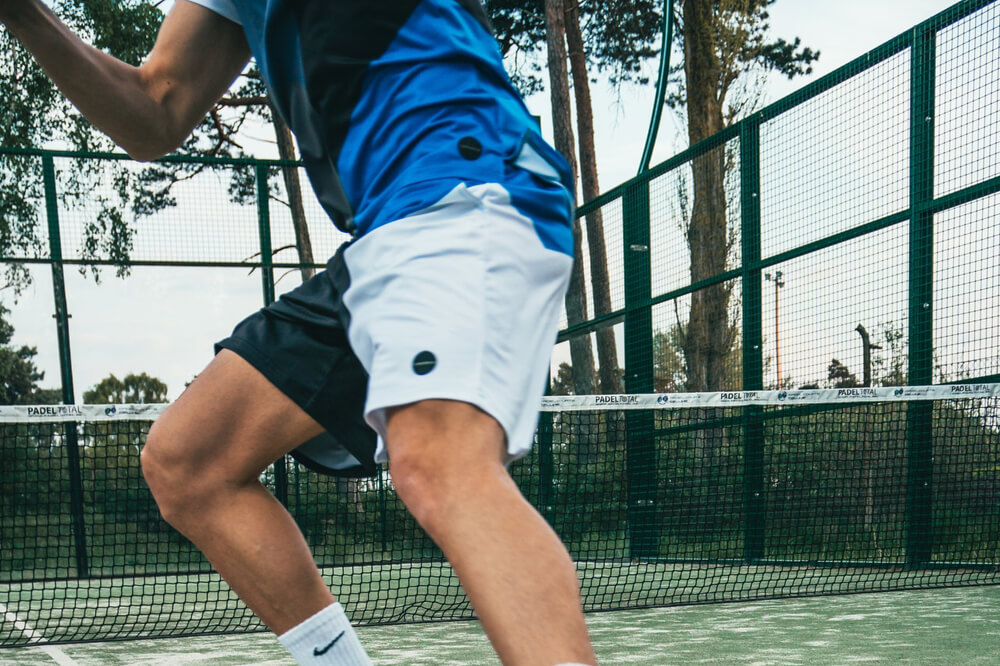Tennis Court Maintenance – Keeping Your Court in Tip Top Shape

If you enjoy the occasional game of tennis or are something of a competitive tennis player, then you can certainly appreciate the importance of having a tennis court that is in great condition. However, as with any other frequently used equipment, tennis courts are not indestructible. To keep your tennis court in tip-top shape, regular maintenance is vital beyond a doubt.
In this article, we delve into the intricacies of tennis court maintenance, providing useful tips on how you can go about keeping your tennis court in good condition. We also briefly discuss the important role that tennis court fencing plays when it comes to tennis court maintenance.
Tips and Tricks for Maintaining Your Tennis Court
When it comes to upkeep and maintenance of your tennis court, there are several things you can do on a regular basis to keep your court in pristine condition. These include:
- Clean your court
- Remove standing water
- Remove debris
- Maintaining drainage system
Clean your court
Perhaps the most important yet most understated aspect of tennis court maintenance is cleaning. Regular cleaning of your tennis court is essential to make sure that it does not start to deteriorate. When it comes to cleaning your tennis court, you would ideally want to inspect the grounds for any signs of mould or mildew growth. These are often the result of some decaying organic matter that may have somehow gotten onto your tennis court.
Remove standing water
Standing water refers to pools of accumulated water on the surface of your tennis court. Most people tend not to care much about standing water, since the problem seemingly resolves itself the moment it stops raining and the water evaporates.
However, what most tennis court owners often fail to realise is that rainwater washes away dirt and gunk, which then accumulates in puddles of standing water on your court grounds. When the water evaporates, it leaves behind streaks of dirt and gunk. Over time, a build-up of dirt and gunk can start to affect the surface quality of your tennis court, increasing its abrasiveness and impeding player movements. Therefore, it is crucial to always remove standing water from your court after a rainfall.
Remove debris
More often than not, you will find that organic debris such as leaves finds its way onto your tennis court grounds by way of being carried by the wind. While this may not seem like a problem on the surface, one must remember that leaves are a form of organic matter and can start to rot over this.
As a tennis court owner, rotting organic matter on your court would likely strike you as a cause for concern, which is why it is so important to regularly remove debris and prevent it from piling up.
Maintaining drainage system
Another aspect of tennis court maintenance that people often forget about is maintaining the draining and runoff system around your tennis court. A failing draining system can cause serious problems for your tennis court. If your drainage system is clogged with organic debris such as leaves or plant growth, it may result in your water from your drains backing up during a period of heavy rainfall, bringing with it the gunk from your drainage pipes. Thus, conducting a regular check on your drainage system is one of the best ways to ensure that this does not happen and that your tennis court remains clean.
The Role of Tennis Court Fencing in Tennis Court Maintenance
It is undisputed that the main purpose of tennis court fencing is to keep tennis balls confined to the court. However, two often-overlooked benefits of tennis court fencing are its ability to keep unwanted debris out of your tennis court and afford it some measure of privacy.
Tennis court fencing of the proper kind serves to reduce the influence that wind can have on players’ performance. Soft fences on their own can be a great way to reduce external wind from blowing into your tennis court. However, one added benefit of this is that debris carried by the wind such as leaves and various other garbage are also kept from being blown onto your tennis court, saving you the hassle of having to clean it up and reducing how often you have to clean your tennis court. In fact, simply adding a windscreen to a chain link or chain mesh fence can also achieve the same effect.
At the same time, tennis court fencing can also serve to protect the privacy of your tennis court. Thus, this can help to prevent unwanted visitors from trespassing onto your tennis court and potentially causing some damage to your court.
With these added benefits of tennis court fencing in mind, it is clear that every tennis court needs a fence. If you would like to find out more about the various options available to you when it comes to tennis court fencing, check out our article on the ins and outs of tennis court fencing.
Do You Need a Fence? We Can Help
Have you recently finished construction on your tennis court and just realised that you haven’t gotten it fenced up yet? Or are you perhaps looking for a contractor to begin the process of tennis court construction with? As Melbourne’s leading construction firm, TFR Construction is here to serve all of your sports court needs, whatever the case may be. From excavations to tennis court construction to tennis court fencing, we have got you covered every step of the way. Feel free to get in touch with us for a no-obligation consultation on your project or if you would simply like to find out more.
Recent Posts
A Parcel for the Picking – Things to Consider When Buying Land for Your Home
Selecting the proper parcel of land might be challenging but approaching the task with the correct knowledge makes it worthwhile.
Stone Landscaping: Adding Statement Stone and Boulders to Your Landscape
Stone landscaping is low maintenance, sustainable, and extremely versatile. Here is a realistic view of the main pros and cons of stone landscaping.
5 Ways to Beautify Your Sleeper Retaining Walls
In this blog post, we examine how you can combine looks and function with the latest designs of retaining walls available today.
How Sleeper Retaining Walls Can Help with Property Water Drainage Systems
We take a closer look at why retaining walls can be a fantastic solution for redirecting water around the house and protecting your foundation.
What Is a Commercial Contractor?
Contractors who work on commercial buildings have the know-how, expertise, and certifications to handle commercial construction work. But what exactly is a commercial contractor, and do you need one for your next project? Read on to find out if a commercial contractor is right for you.
Recent Posts
A Parcel for the Picking – Things to Consider When Buying Land for Your Home
Selecting the proper parcel of land might be challenging but approaching the task with the correct knowledge makes it worthwhile.
Stone Landscaping: Adding Statement Stone and Boulders to Your Landscape
Stone landscaping is low maintenance, sustainable, and extremely versatile. Here is a realistic view of the main pros and cons of stone landscaping.
5 Ways to Beautify Your Sleeper Retaining Walls
In this blog post, we examine how you can combine looks and function with the latest designs of retaining walls available today.
How Sleeper Retaining Walls Can Help with Property Water Drainage Systems
We take a closer look at why retaining walls can be a fantastic solution for redirecting water around the house and protecting your foundation.
What Is a Commercial Contractor?
Contractors who work on commercial buildings have the know-how, expertise, and certifications to handle commercial construction work. But what exactly is a commercial contractor, and do you need one for your next project? Read on to find out if a commercial contractor is right for you.





